
Tamil literature refers to the literature in the Tamil language. Tamil literature has a rich and long literary tradition spanning more than two thousand years. The oldest extant works show signs of maturity indicating an even longer period of evolution. Contributors to the Tamil literature are mainly from Tamil people from South India, including the land now comprising Tamil Nadu, Kerala, Sri Lankan Tamils from Sri Lanka, and from Tamil diaspora. The history of Tamil literature follows the history of Tamil Nadu, closely following the social, political and cultural trends of various periods. The early Sangam literature,, contain anthologies of various poets dealing with many aspects of life, including love, war, social values and religion. This was followed by the early epics and moral literature, authored by Hindu, Jain and Buddhist authors, lasting up to the 5th century CE. From the 6th to 12th century CE, the Tamil devotional poems written by Nayanmars and Alvars, heralded the great Bhakti movement which later engulfed the entire Indian subcontinent. It is during this era that some of the grandest of Tamil literary classics like Kambaramayanam and Periya Puranam were authored and many poets were patronized by the imperial Chola and Pandya empires. The later medieval period saw many assorted minor literary works and also contributions by a few Muslim and European authors.

The Tamil Sangams or Cankams were assemblies of Tamil scholars and poets that, according to traditional Tamil accounts, occurred in the remote past. Scholars believe that these assemblies were originally known as kooṭam or "gathering," which was also a name for Madurai. Three assemblies are described. The legend has it that the first two were held in cities since "taken by the sea", and the third was held in the present-day city of Madurai. The word sangam is used in the context of an 'academy' in several Tamil literary works, such as Tevaram, Thiruvilayadal puranam, periyapuranam and Irayanar Ahaporul. Also legend has it that Nammazwar's Thiruvaimozhi was approved in an assembly of 300 poets.
Abithana Chintamani is an encyclopedia on Tamil literature written by A.Singaravelu Mudaliar. This is the first encyclopedia on Tamil literature. The first edition, which contains a recommendation dated 1899 by V. Kanakasabai Pillai, appeared in 1910 and contained 1050 pages. The second edition, containing 1634 pages, appeared posthumously in 1934, with a preface by the author's son, and is available as reprints.
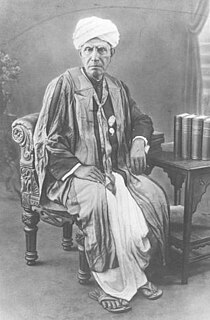
Uttamadhanapuram Venkatasubbaiyer Swaminatha Iyer was a Tamil scholar and researcher who was instrumental in bringing many long-forgotten works of classical Tamil literature to light. His singular effort over five decades brought to light major literary works in Tamil and contributed vastly to the enrichment of its literary heritage. Iyer published over 91 books in his lifetime, on a variety of matters connected to classical Tamil literature, and collected 3,067 paper manuscripts, palm-leaf manuscripts and notes of various kinds. He is affectionately called Tamil Thatha.
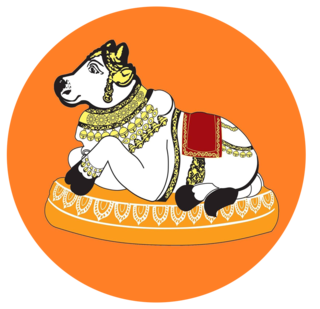
The Periya Puranam, that is, the great purana or epic, sometimes called Tiruttontarpuranam, is a Tamil poetic account depicting the lives of the sixty-three Nayanars, the canonical poets of Tamil Shaivism. It was compiled during the 12th century by Sekkizhar. It provides evidence of trade with West Asia The Periya Puranam is part of the corpus of Shaiva canonical works.
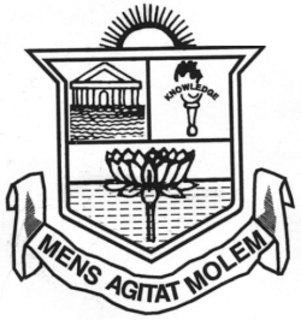
Pachaiyappa's College is one of the oldest educational institutions in Chennai, in the South Indian state of Tamil Nadu. In addition, it is the first sole Indian college in Madras Presidency.

Nellaiappar Temple is a Hindu temple dedicated to the deity Shiva, located in Tirunelveli, a city in the South Indian state of Tamil Nadu. Shiva is worshipped as Nellaiappar represented by the lingam and his consort Parvati is depicted as Kanthimathi Amman. The temple is located on the northern banks of Thamirabarani River in Tirunelveli district. The presiding deity is revered in the 7th century Tamil Saiva canonical work, the Tevaram, written by Tamil saint poets known as the nayanmars and classified as Paadal Petra Sthalam.
Sengunthar, also known as the Kaikolar and Sengunthar Mudaliyar, is a community of Tamil people commonly found in the Indian state of Tamil Nadu, Puducherry and also in some other parts of South India and Northern Province of Sri Lanka. They are traditionally a weaving community. They are sub divided into numerous clans based on a patrilineal system called Koottam or Kulam, which is similar to gotras.

Meenakshi Temple, is a historic Hindu temple located on the southern bank of the Vaigai River in the temple city of Madurai, Tamil Nadu, India. It is dedicated to Meenakshi, a form of Parvati, and her consort, Sundareshwar, a form of Shiva. The temple is at the center of the ancient temple city of Madurai mentioned in the Tamil Sangam literature, with the goddess temple mentioned in 6th century CE texts.

Polygar was the feudal title for a class of territorial administrative and military governors appointed by the Nayaka rulers of South India during the 16th–18th centuries.
Ariyanatha Mudaliar was the Delavoy (General) and the Chief Minister of the greatest of the Nayaka domains established by the Vijayanagar viceroy and later ruler of Madurai, Viswanatha Nayak (1529–64). He is renowned as the founder of the quasi-feudal organisation of regions called poligar or the palayakkarar system where the regions are divided into palayams and are independently governed by poligars or palayakkarars.
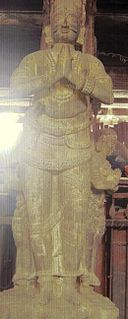
Viswanatha Nayak was the Vijayanagara viceroy to Madurai in south India during the 16th century. He later became the ruler of Madurai after the fall of the Vijayanagara empire. He is the founder of the Nayak dynasty of Madurai.

Pammal Vedharangam Sambandham Mudaliar (1873-1964), who has been described as "the founding father of modern Tamil theatre", was a playwright, director, producer and actor of the late nineteenth- and early twentieth centuries. He was a recipient of the civilian honour of the Padma Bhushan.
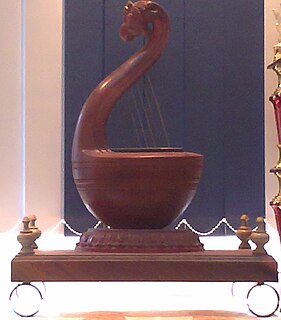
The yazh' is a harp used in ancient Tamil music which was the ancestor of modern-day veena. A closely related word yali refers to any structure, particularly front, that resembles the way the tip of stem of this instrument was carved into. The yazh was an open-stringed polyphonous instrument, with gut strings (narambu) with a wooden boat-shaped skin-covered resonator and an ebony stem.
Kangeyar was a Shaivite poet and ascetic who appears to have lived during 14th century. born in a Sengunthar Kaikola Mudaliar family of Tondaimandalam. He wrote Urichol Nigandu, a lexical work which is familiar to scholars. This lexicon was mentioned by Andipulavar in his Asiriya Nigandu. An edition of this work was published at Pondicherry in 1840, comprising only 220 stanzas but the one which was issued from the press at Jaffna in 1858 had 330 Stanzas. The lexical work unlike others of the kind, being written in the Venba metre and well adapted for beginners is used in the Schools.
Padikasu Pulavar is a Tamil poet who had lived during the late 17th and early 18th centuries. He was a native of Kalandai in Thondaimandalam. He was famous for authoring Thondaimandala Sadhakam, a poetic collection written in praise of Thondaimandala Vellalars or agriculturists. He had also authored Thandalaiyar Sadhakam. He was a court poet of Raghunatha Kilavan, first Sethupathi of Ramnad. The poet was a contemporary of Kalamega Pulavar. Ramalinga Swamigal had written a fine commentary on the invocatory song of the book, Thondamandala Sathagam, which contains one hundred songs, sung by the great poet Padikasu Pulavar.
Tiruvalluva Maalai, literally 'Garland of Valluvar', is an anthology of ancient Tamil paeans containing fifty-five verses each written by different poets praising the ancient work of the Kural and its author Valluvar. With the poets' time spanning across centuries starting from around 1st century CE, the collection is believed to have reached its present form by 11th century CE. With the historical details of the ancient philosopher and his work remaining obscure, much of the legend on the Kural and Valluvar as they are known today are chiefly from this work. The collection also reveals the name of the author of the Kural text as 'Valluvar' for the first time, as Valluvar himself composed the Kural text centuries earlier without indicating his name anywhere in his work. Reminiscing this, Monsieur Ariel, a French scholar of the 19th century, famously said of the Tirukkural thus: Ce livre sans nom, par un autre sans nom.













